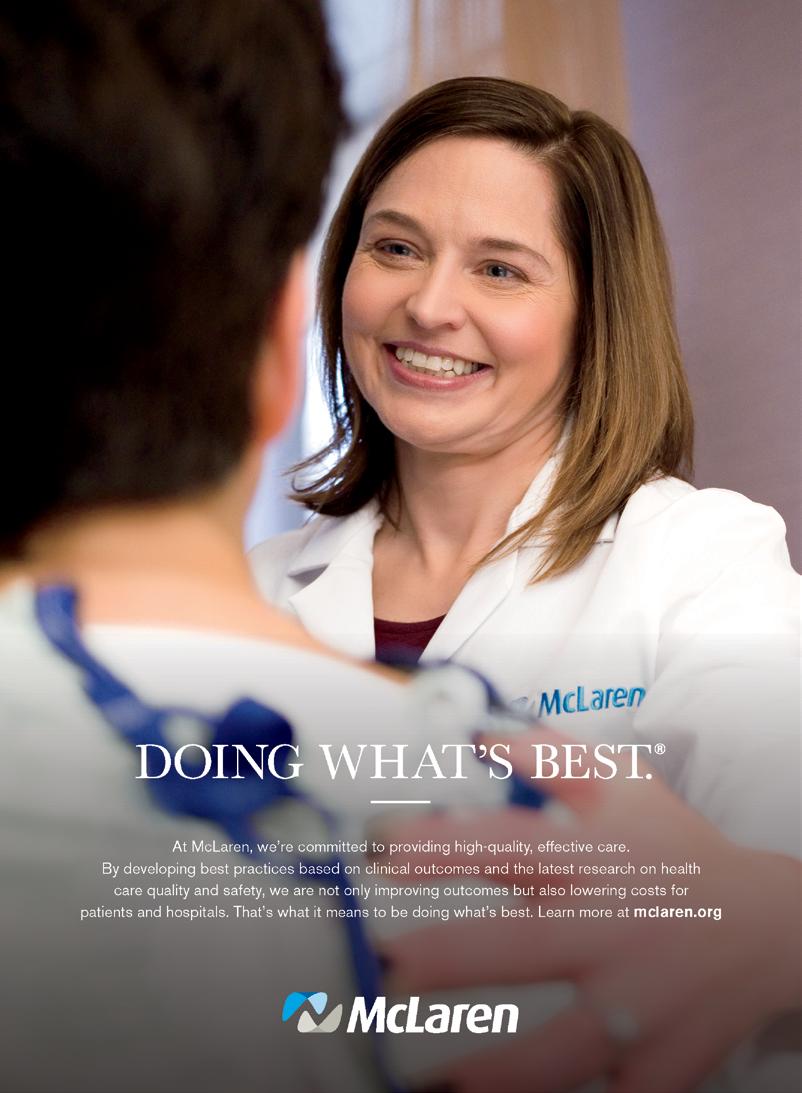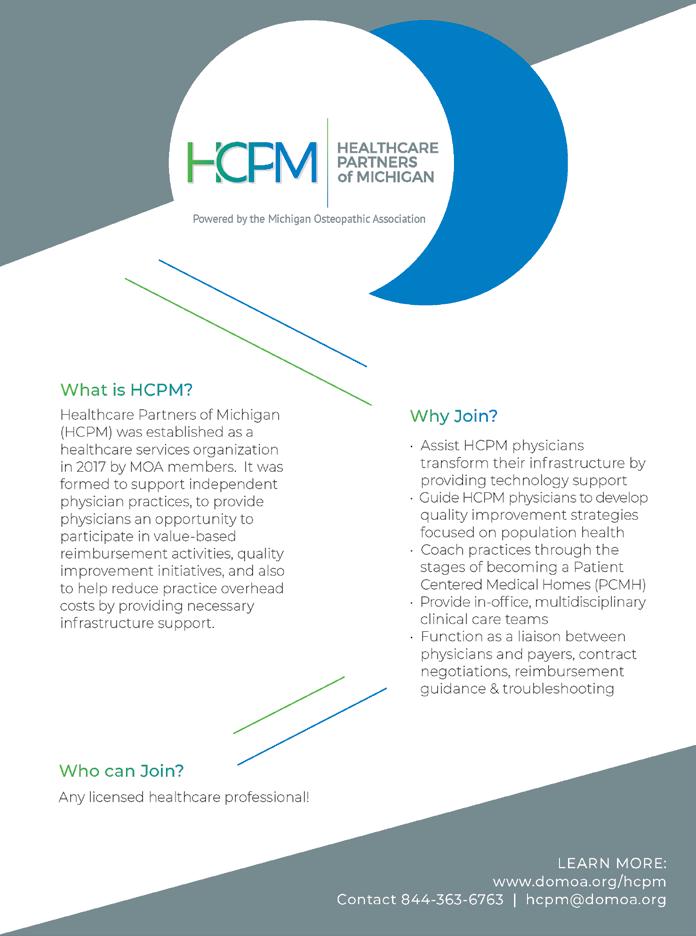
4 minute read
MOA mourns the passing of Augustine L. Perrotta, DO
Augustine L. Perrotta, DO
Advertisement
It is with great sadness the Michigan Osteopathic Association (MOA) shares the news on the passing of Augustine L. Perrotta, DO, November 24, 2019. Dr. Perrotta was an accomplished physician, a vocal advocate of the osteo pathic profession and a prolific author. His education and practice as a physician took him from Seattle to New York, settling in the Midwest. For over 30 years, he worked as a hematologist and medical oncologist at Detroit Osteopathic Hospital, and at Henry Ford Hospital-Warren, where he served as chairman of the Department of Medicine for the last 10 years of his career. He was an Emeritus Professor of Medicine at Michigan State University College of Osteopathic Medi cine and served as a mentor to hundreds of medical students, interns, residents and physicians.
"Dr. Perrotta was an iconic osteopathic physician, brilliant in his field, outstand ing teacher, pioneer in his field, author of medical as well as a non medical book. He was devoted to his faith his family and his profession," said Peter Ajluni, DO, Past President of the MOA.
In his retirement, Dr. Perrotta published a non-fiction
book comprised of 15 medically-oriented short-stories
entitled “A View from the Inside.” The book chronicled
his connection to public and private personalities
describing his connection to them and the impact they
had upon him.
Dr. Perrotta was a fixture at the MOA Spring convention, with his signature bow tie, goatee and smile. He could always be seen greeting colleagues and protégées who would share stories and relay the impact he had made on their lives and careers.
The MOA encourages those who knew Dr. Perrotta to leave their recollections on the Guestbook using the link below.
Local obituary and guestbook

I’M SUPPORTING HEALTHCARE INTEROPERABILITY. HOW ABOUT YOU?
By Ewa Matuszewski, CEO, MedNetOne
We know that “Fix the Damn Roads” was a critical campaign slogan for Michigan’s current governor while running for office. But is “fix the damn interoperability problem with electronic health records” another challenge? T he intersection of healthcare and politics is obviously not new. I would contend it’s more visible – and rancor ous – than ever. Still, the focus tends to be on access to care and delivery of care, and I understand that. Interop erability of Electronic Health Records (HER) hardly pulls at the heartstrings or incites passionate conversation from either side of the aisle; accord ingly, it doesn’t garner much attention from the consumer media either. That is why it is important for healthcare decision makers to individually and collectively raise awareness of the issue, not just in the healthcare com munity, but with our elected officials.
To make sure we’re clear on the topic (and in case some politicians are reading this,) interoperability in this context refers to the ability to share and interpret patient data and information electronically across systems and devices among hospitals, insurers, clinics and private practice physicians.
I’ve said it before, and I’ll say it again: “There ought to be a law.”
While I disdain the proliferation of excessive laws that seemingly aim to control our every move, legislation embraced by both parties to establish requirements for the interoperabil ity of individual health care records is critical element of health reform. It empowers both patients and their providers to get sensible, timely care without excessive testing, over-testing and re-testing. It is patient-focused and cost conscious, while consistent with population health goals.
If I’m hospitalized and then transferred to another hospital, the assumption is that my records will be immediately available electronically to the receiv ing hospital. Similarly, if I had an ultrasound done at hospital “X” last year, the ultrasound results should be available online, with my permission, at hospital “Y” this year, correct? The response to either scenario is, “Not necessarily,” especially if it was per formed under a different insurance plan the year prior. Similarly, unless a physician practice uses a registry that “speaks” to another physician practice, the patient has to ask the provider for the information to be released, which can get needlessly complicated when the physician doesn’t use a registry at all. Why is this lack of patient data transfer still acceptable in 2019? Surprising to many, interoperability also plays a role in chronic illness surveil lance and treatment. Among our organization’s patient population, primary care physicians have dramatically increased compliance with diabetic patients for annual retinal eye exams, thanks to the affordability of a smartphone app that allows the scan to be taken in the Primary Care Physicians (PCPs) office using an iPhone. The scanned results are then immediately sent electronically to a retinal specialist for interpretation; a referral to a local retinal specialist is pro vided when merited.
Despite multiple state-wide initiatives in recent years to make interoperability a reality, including those spearheaded by state agencies, none of our collec tive efforts have moved the needle far enough. Michigan is fortunate to have two key partners in the area of interop erability: Blue Cross and Blue Shield of Michigan through its Physician Group Incentive Program (PGIP) and the Michigan Health Information Network Shared Services (MiHIN). Both orga nizations along with Michigan’s Physician Organizations are supporting a healthcare environment that would be designed to power the future of interop erability through the integration, acceptance, and testing of technologies, with open standards within a collaborative digital platform. But then again maybe legislation could help us finally achieve the goal?






